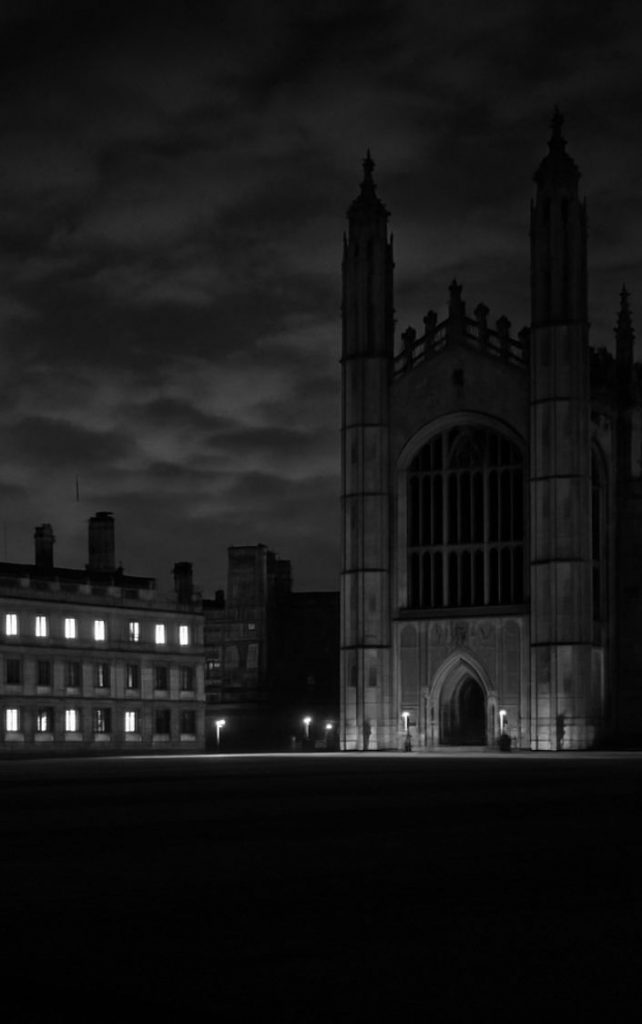Spires, Secrets, and Shadows
Cambridge isn’t just a city. It’s a legacy written in stone and silence, tucked between winding cobbled streets, misty riverbanks, and timeworn college walls. For centuries, it’s been a haven of learning, a battleground of belief, and—if you know where to look—a place where ghosts walk just as confidently as scholars.
Where It All Began
Long before the universities and the libraries, Cambridge was a humble Roman outpost. Known then as Duroliponte, it was a crossing point along the River Cam, offering passage and protection to Roman soldiers and traders. By the early Middle Ages, the town had grown into a thriving market village, surrounded by fenland and brimming with potential.
The Birth of a Scholarly Giant
The story really begins in 1209, when a group of scholars fled hostile conditions in Oxford and took refuge in Cambridge. Within decades, the town became home to what would evolve into one of the most prestigious educational institutions in the world: the University of Cambridge.
Founded officially in 1209, the university grew slowly at first. It wasn’t until the 13th and 14th centuries that individual colleges began forming, each one a fortress of knowledge, tradition, and strict monastic rules. Peterhouse, founded in 1284, is the oldest college still standing.
Architecture of Power and Belief
Gothic spires, medieval cloisters, and grand halls dominate the Cambridge skyline—King’s College Chapel being the crown jewel. Commissioned by Henry VI in 1446, it took over a century to complete and remains a masterpiece of English Gothic architecture. Its soaring fan vault ceiling and towering stained glass windows tell stories not just of faith, but of kings, conflict, and ambition.
A City of Rebels and Revolution
Cambridge didn’t just educate monarchs and mathematicians—it also shaped rebels. From the Reformation to the English Civil War, its scholars often found themselves at the heart of political and religious upheaval. Oliver Cromwell studied at Sidney Sussex College before leading the Parliamentary forces during the English Civil War.
Later, the city would help ignite revolutions in thought. Sir Isaac Newton made his legendary discoveries at Trinity College. In the 20th century, Alan Turing—codebreaker, mathematician, and tragic queer icon—walked the very same courts.
Beyond the University: The Town that Breathes
While the university gets the spotlight, the rest of Cambridge is no less captivating. The River Cam, with its languid punts and weeping willows, winds through the city like a quiet pulse. Hidden gardens, eerie graveyards, and crooked alleyways add texture and tension to a place that never quite lets you forget its age—or its secrets.
Cambridge Today: Between Legacy and Living
Today, Cambridge is a city of contrasts. Ancient colleges stand beside high-tech labs. Libraries archive illuminated manuscripts while students livestream lectures. Tourists flood the streets by day; at night, the stone walls whisper their own stories to those willing to listen.
It’s a city of intellect and intuition, tradition and transformation. A place where every brick has a memory, every path a purpose. And if you ever find yourself walking alone through its fog-drenched streets, don’t be surprised if you feel something watching—this city remembers.
Final Thoughts
Whether you’re drawn to Cambridge for its academic fame, its haunting beauty, or its quieter corners filled with eroded names and forgotten histories, one thing is certain—it’s not just a place. It’s a story. And like all good stories, it invites you in, dares you to question, and never quite lets you go.
Have a memory of Cambridge? Or a favorite hidden spot no one talks about? I’d love to hear it in the comments below.
